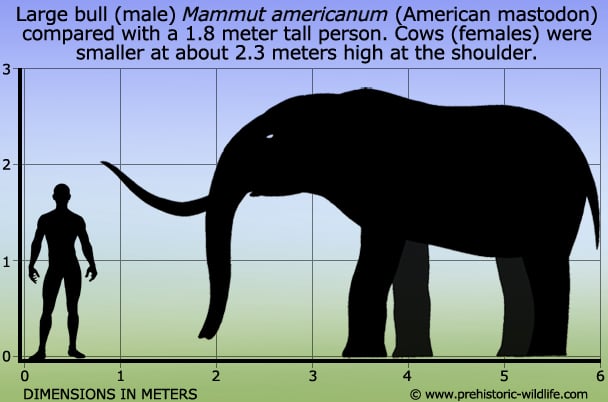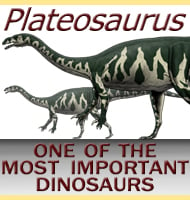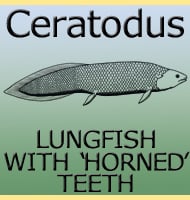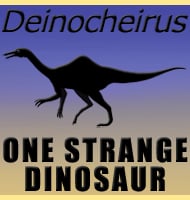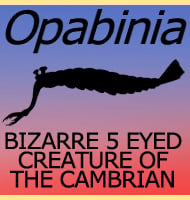In Depth
Further Reading
– Mammalian fauna of the upper Juntura Formation, the black butte local fauna. in The Juntura Basin: Studies in Earth History and Paleoecology. – Transactions of the American Philosophical Society 53 (1): 77. – J. A. Shotwell & D. E. Russel – 1963. – A Late Cenozoic Vertebrate Fauna from the Coso Mountains, Inyo County, California. – Carnegie Institution of Washington Publication 483 (3): 77–109. – J. R. Schultz – 1937. – Intestinal Contents of a late Pleistocene Mastodont from Midcontinental North America. – Quaternary Research 36: 120–125. – Lepper et al. – 1991. – The oldest Mammut (Mammalia: Proboscidea) from New Mexico. – New Mexico Geology: 10–12. – Spencer G. Lucas & Gary S. Morgan – 1999. – The American Mastodon Mammut americanum in Mexico. – O. J. Polaco, J. Arroyo-Cabrales, M. E. Corona J. G. L�pez-Oliva – In Cavarretta, G. Gioia, P. Mussi, M. et al. The World of Elephants – Proceedings of the 1st International Congress, Rome October 16–20, 2001. Rome: Consiglio Nazionale delle Ricerche – 2001. – Mammoth (Mammuthus spp.) and American mastodont (Mammut americanum) bonesites: what do the differences mean? – Advances in Mammoth Research 9: 185–204. – G. Haynes & J. Klimowicz – 2003. – The Overmyer Mastodon (Mammut americanum) from Fulton County, Indiana. – The American Midland Naturalist 159 (1): 125–146. – N. Woodman – 2008. – Fossil Proboscidea from the Upper Cenozoic of Central America: Taxonomy, Evolutionary and Pelobiogeographic Significance. – Revista Geol�gica de Am�rica Central. 42: 9–42. – Spencer G. Lucas & Guillermo E. Alvarado – 2010. – Regional variation in the browsing diet of Pleistocene Mammut americanum (Mammalia, Proboscidea) as recorded by dental microwear textures. – Palaeogeography, Palaeoclimatology, Palaeoecology. 487: 59–70. – J. L. Green, L. R. G. DeSantis & G. J. Smith – 2017. – Mammut pacificus sp. nov., a newly recognized species of mastodon from the Pleistocene of western North America. – PeerJ. 7: e 6614. – A. C. Dooley, E. Scott, J. Green, K. B. Springer, B. S. Dooley & G. J. Smith – 2019. – American mastodon mitochondrial genomes suggest multiple dispersal events in response to Pleistocene climate oscillations. – Nature Communications. 11 (1): 4048. – Emil Karpinski, Dirk Hackenberger, Grant Zazula, Chris Widga, Ana T. Duggan, G. Brian Golding, Melanie Kuch, Jennifer Klunk, Christopher N. Jass, Pam Groves, Patrick Druckenmiller, Blaine W. Schubert, Joaquin Arroyo-Cabrales, William F. Simpson, John W. Hoganson, Daniel C. Fisher, Simon Y. W. Ho, Ross D. E. MacPhee, & Hendrik N. Poinar – 2020.
